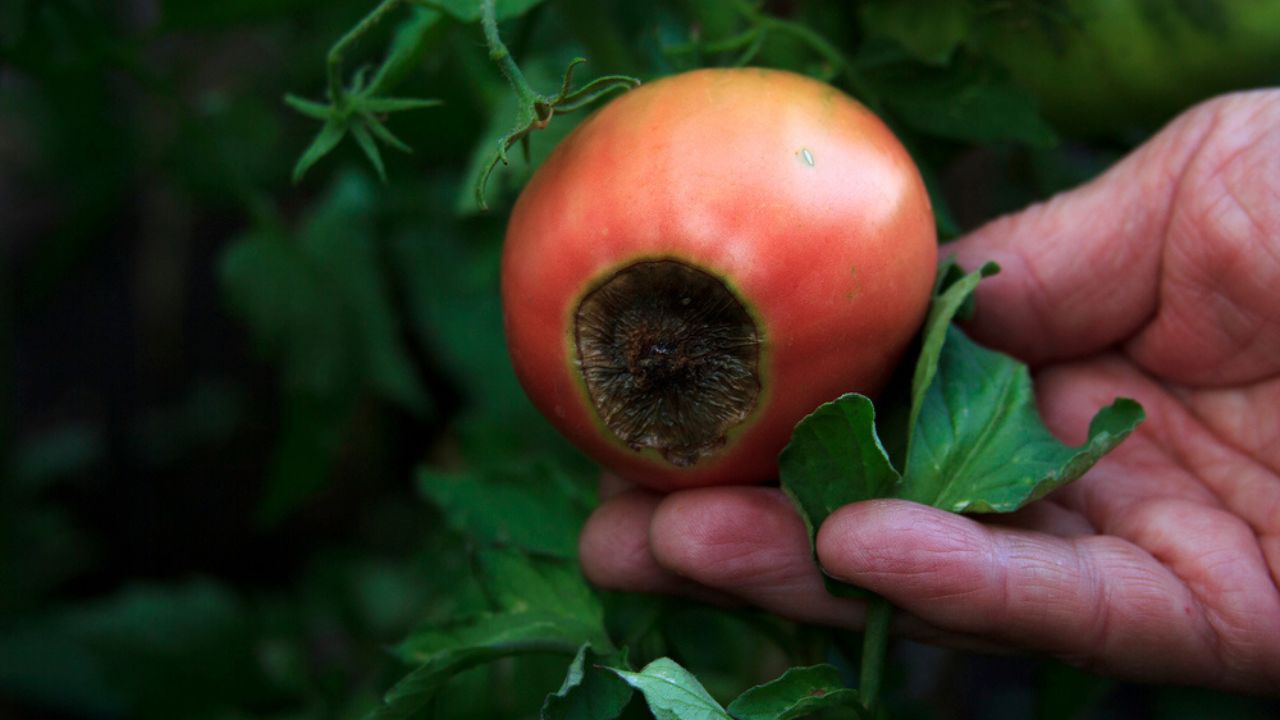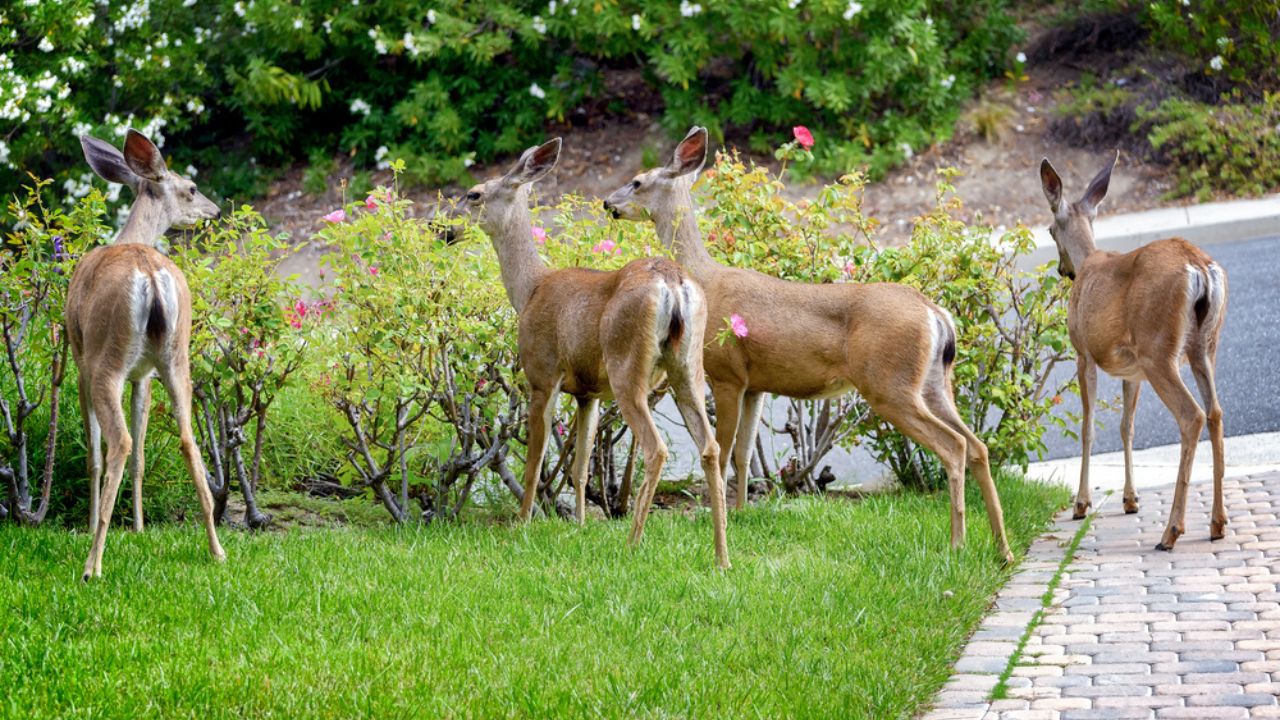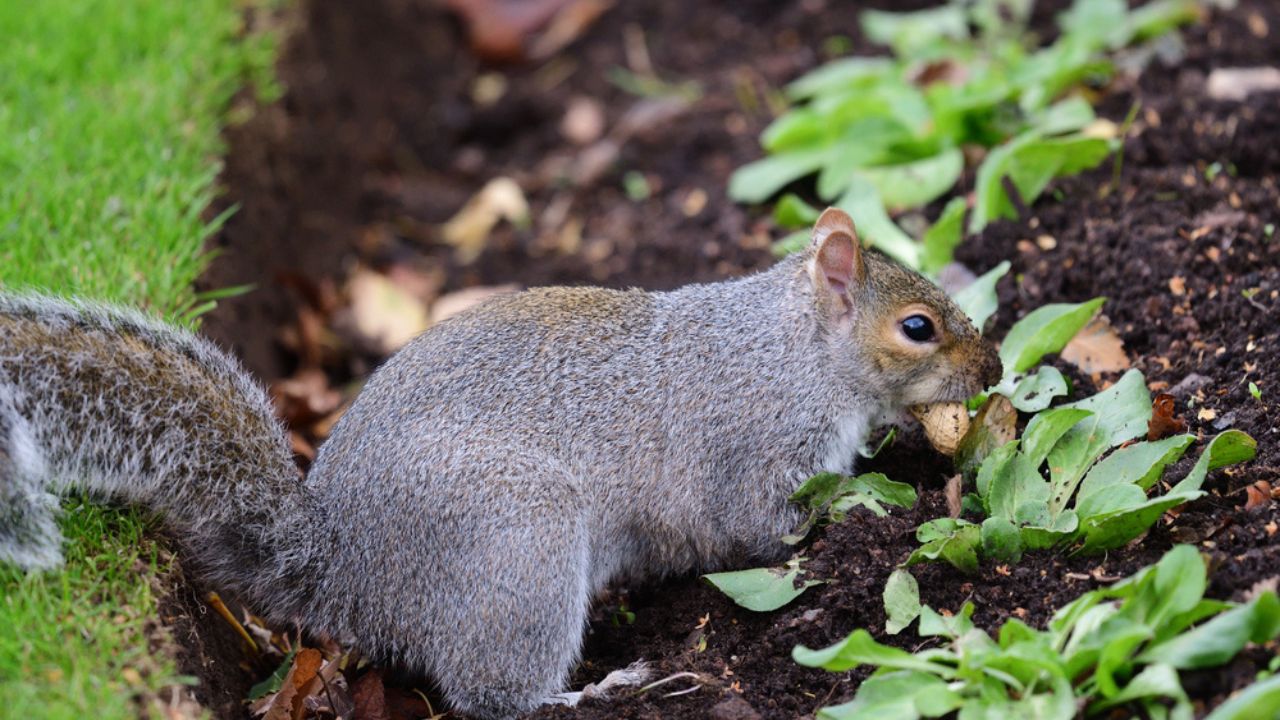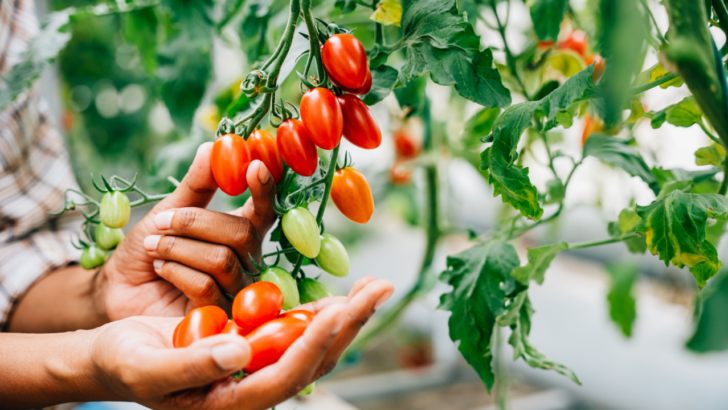If you have a garden, even a small one, you’re probably growing a couple of tomato plants. When you get it right, they’re such a rewarding fruit (yes, fruit!) to pick and enjoy.
Unfortunately, growing tomatoes isn’t always easy. Some are self-inflicted and easily fixable, but others might need a bit more attention. Let’s look at some of the 10 most common tomato plant problems and challenges you may face, plus ways to prevent or fix them.
If you’re tomato plants are dying, you can also check out how to revive a dying tomato plant.
1. Tomato Hornworms

Image Credit: Shutterstock.
These green (practically invisible thanks to their leaf color) worms can mow through an entire full-grown tomato in a couple of days. If they bring a few friends, you can lose your entire tomato patch in a week!
To prevent them from coming to your tomatoes, you could try a couple of things:
- Plant borage between your tomato plants
- Grow basil and marigolds in your tomato beds, and the hornworms will stay away
If you know you have them in your tomatoes (you’ve seen the signs), it’s time to hunt them down. Look for chewed up tomato leaves and small black droppings. It’s very hard to find them during the day, but wait until nightfall and look for them with a blacklight flashlight. Once you shine the black light on them, they’ll glow in the dark. Check out my “catch” below!
Have a cup of warm water with a drop of soap to drop them in there. If you have chickens, they’ll love them. If not, they’ll die in the soapy water.
2. Early Blight

Image Credit: Shutterstock.
Early blight, a type of fungus, sets in early in the life of the tomato, and you’ll recognize it when you see brown spots on the leaves of the tomato plants. The best way to avoid this is to clean up your garden beds in the fall and remove all the spent vegetables. This way, you won’t perpetuate disease from one year to the next.
3. Late Blight

Image Credit: Shutterstock.
Just like the early blight, late blight will be visible on the leaves: brown, scorched leaves. It’s most likely a fungus that gets aggravated from splashing water on the leaves and then burning in the sun. Be careful while watering the tomatoes: don’t get the leaves wet.
If your tomatoes are infected, remove all leaves and tomatoes and throw them away (not the compost pile). Sometimes you’ll need to pull the entire plant. Sad, but better than losing your entire tomato crop.
4. Blossom End Rot

Image Credit: Shutterstock.
If you see brown papery-looking spots at the bottom of your tomatoes, you’re probably dealing with blossom end rot. It is caused by uneven watering and a lack of calcium.
You can prevent it by adding ground-up eggshells to the soil around your tomato plants and watering on a regular basis. Maybe mulch around the tomatoes, too.
5. Deer

Image Credit: Shutterstock.
If you live in deer country, you’ll need a fence around your tomatoes (well, around anything you want to keep the deer from eating). For the last 2 years, we have had deer visit weekly to get their share of our tomatoes. They KNEW! As soon as the tomatoes started growing again, they’d be back and snip off the new growth.
I kid you not: we had less than 10 tomatoes from 20 plants. Because of that, last summer I decided to grow tomatoes on the porch and did pretty good with cherry tomatoes.
Learn more about keeping unwanted creatures out of the garden.
6. Squirrels

Image Credit: Shutterstock.
They might be cute from a distance, but squirrels do real damage in the garden! They love ripe tomatoes! So, as you’re waiting for your first tomato to ripen so are they. Ugh… not cool!
I gathered several ideas from my Facebook audience that worked on deterring squirrels from the tomato garden.
7. Groundhogs

Image Credit: Shutterstock.
Generally, if you have a family of groundhogs, you can kiss your garden goodbye for that year. We had a family a couple of years ago and really struggled. They made holes all around the house (one under the air condition unit was scary).
We tried several things, but what worked best was to add a couple of raw eggs in their tunnels and cover the tunnels with dirt. Thankfully, they stayed away from the foundation of the house.
Keeping them away from our veggies proved a lot harder. But we managed to catch one in a live trap and relocated it. We put some bok choi ends in the trap and got one of the adults within the hour. They learn though, so we couldn’t catch anymore. BUT, they relocated themselves (sadly, a bit too late for us that summer).
8. Aphids

Image Credit: Shutterstock.
Aphids are a problem many of us gardeners deal with in our gardens. They can also come indoors. Thankfully, there are natural ways to get rid of aphids, such as companion planting with marigolds to lure them away.
Even a quick spray of water will help knock them down from the tomato plants.
9. No Cages to Keep Them Up

Image Credit: Shutterstock.
Believe it or not, many people have big problems with their tomato plants sprawling on the ground. And with that come lots of other issues, such as fungus, blight, rotting, etc.
For large tomato plants, not having a good supporting system may mean losing a tomato too early, because it breaks off the stem.
10. Other Tomato Plant Problems

Image Credit: Shutterstock.
We’ve finished the short list and the most common issues, but there are plenty of others, too. Let’s review:
- Dogs – they love tomatoes. Before our Britney Spaniel passed, she thought they were play balls. She wouldn’t eat them, but pick them to play with
- Too much sun (which creates fruit scorching)
- Too cold: This is common at the end of the season, when tomatoes are still producing a great crop, and the frost comes and kills them. Growing tomatoes in a container could help you solve this problem, as you could bring them in at the end of the season and let them ripen. Another way to solve this is to pick the best green tomatoes just before the first frost, wrap them in newspaper, and pile them in a basket. Store them in a dark room (laundry room maybe), and use them as they ripen (you can probably get another month’s worth of tomatoes this way).
- Poor watering habits – you need to develop a strategy to water your tomatoes. They need deep watering every few days.
- Letting the weeds grow after the first couple of months. This happens to us Every. Single. Year! We go on vacation around June, and when we get back, we’re overwhelmed and can never catch up on weeding. This year, we’re going to use the lasagna gardening method to see if it helps.
- Too many tomatoes – yes, this can be a problem too, if you’re not prepared. Here’s what to do if you find yourself with too many tomatoes
- Not enough space to grow all the tomato varieties you want – you might need to restrain yourself.
- Finding enough jars to can up most of the tomatoes you grew.
- Always wishing you had more tomatoes (haha, ok maybe it’s just me)
- A short growing season, which will keep your tomatoes from ripening
- Eating all the tomatoes as soon as they ripen, right there, in the garden. Yeah, it happens to all of us: at least at the beginning of the season.
I’m hoping that learning about the most common tomato plant problems and how to fix them will give you a better tomato harvest this year. If you have solutions to any of these (or other problems you encountered), I ‘d love to hear how you managed to stop the problem.



Edag
Monday 29th of April 2024
I have used 6 inch plastic pot and now 3" peat pots. What do you recommend to avoid transplant shock ?
Adriana Copaceanu
Tuesday 30th of April 2024
Just make sure is not too hot or too cold when you transplant it. I usually make a hole, pour some water in the bottom of it, remove the lowest leaves and plant.
How Far Apart To Plant Tomatoes For Better Yield
Monday 17th of April 2023
[…] common tomato plant problems and how to fix them […]
Growing Hydroponic Tomatoes
Monday 23rd of November 2020
[…] For a nice troubleshooting guide to your tomatoes, see these common tomato plant problems. […]
How To Control Leaf Miners Without Harsh Chemicals
Tuesday 29th of September 2020
[…] miners attack both flowers and vegetables. We had them on our tomato plants (learn more about tomato plant problems) and columbine […]
What Is Blossom End Rot? A Quick Guide To Identification, Treatment, And Prevention
Monday 21st of September 2020
[…] Regardless of whether plants in your garden have experienced blossom-end rot in the past, it is important to implement the prevention strategies outlined above to ensure healthy crops in the future. Compost, mulch, and consistent watering can help prevent blossom-end rot as well as a host of other tomato problems. […]